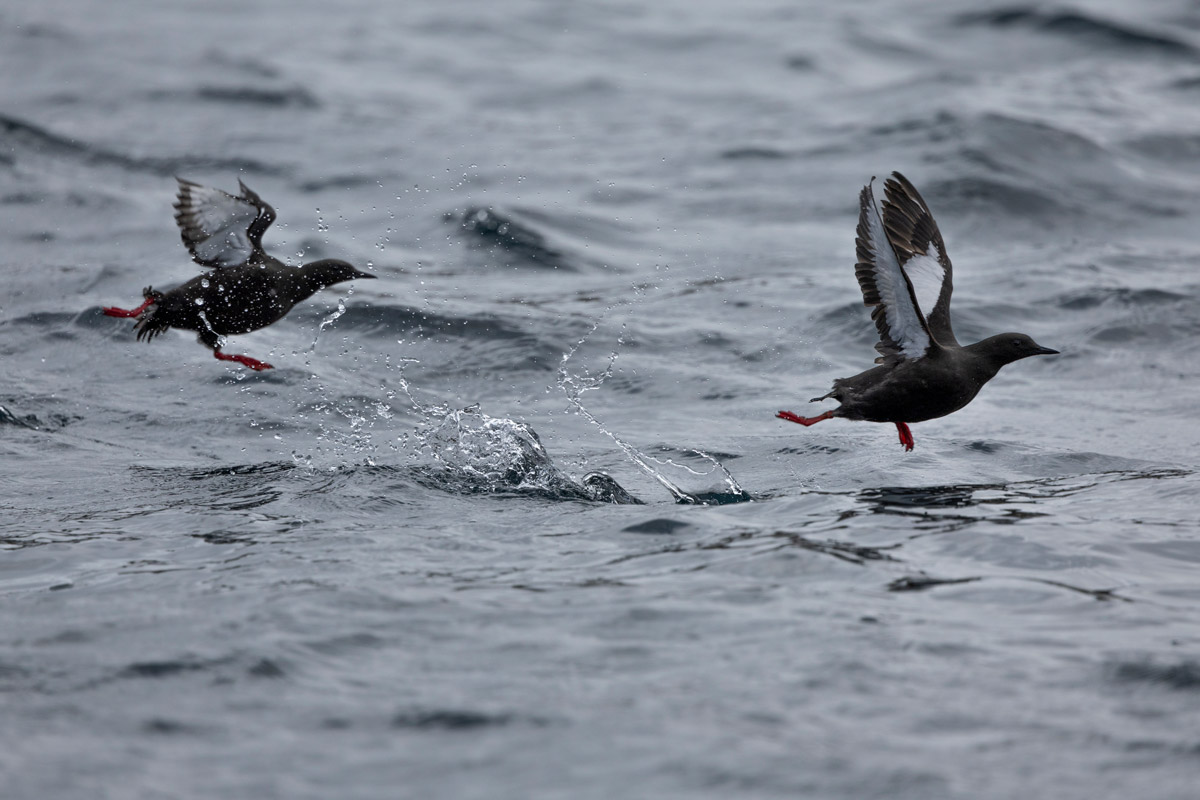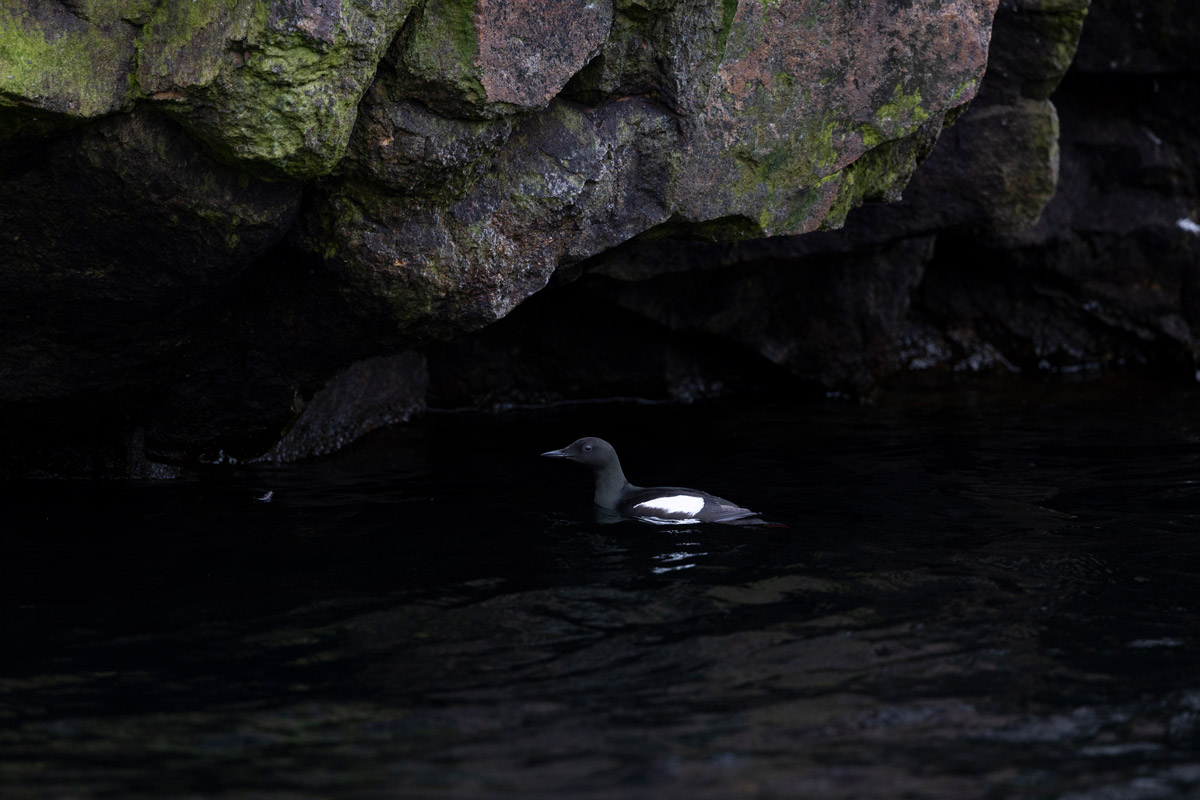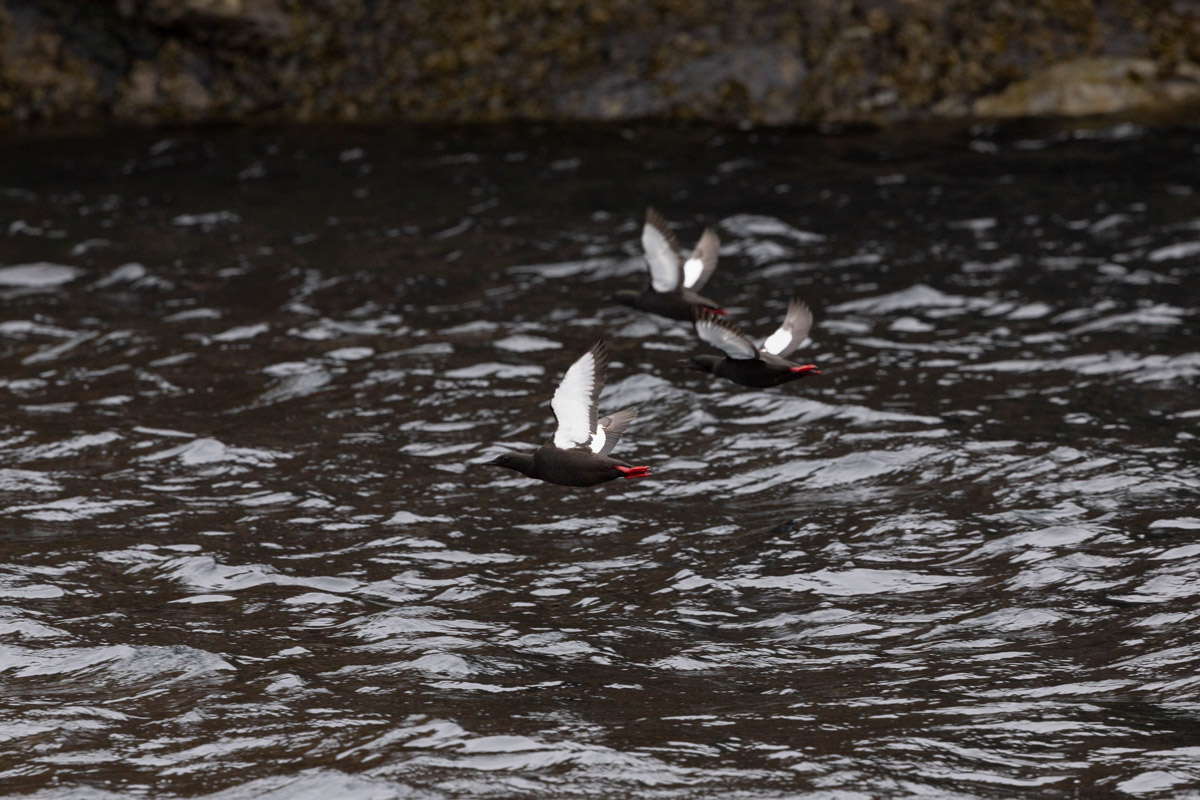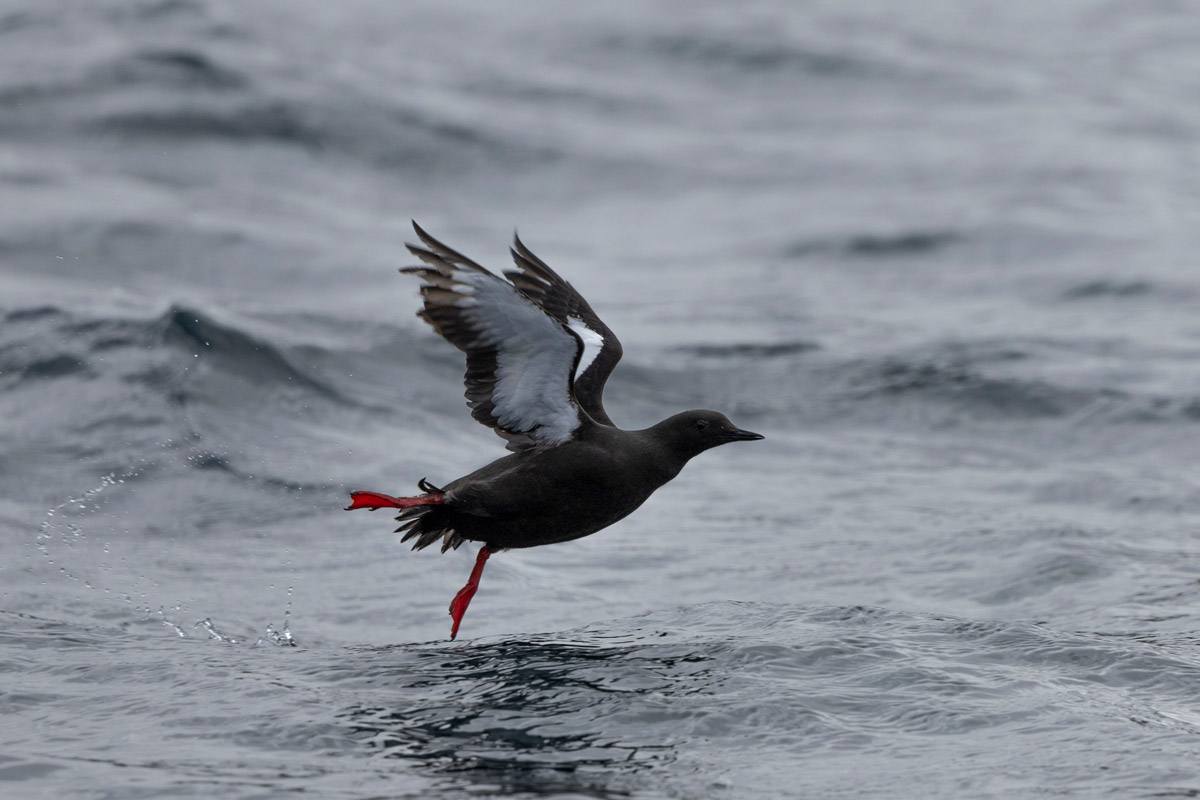Black Guillemot
Black Guillemot Quick Overview
| Scientific Name | Cepphus grylle |
| Population | Estimated at close to 400,000–700,000 individuals globally |
| Regions | North Atlantic and Arctic coasts, including high Arctic islands and temperate zones |
| Destinations | Jan Mayen, Iceland, Canada, Svalbard, Greenland, Denmark, France, Norway, England, Scotland |
| Average Length | ~35 cm (13,7 in) |
| Average Weight | 300–550 g (0.7–1.2 lbs) |
| Diet Habits | Primarily benthic (bottom-dwelling) fish and crustaceans; forages in shallow waters and uses its feet actively while diving |

You can see these birds on your Arctic trips to the Lower Savage Islands, located in the Canadian Arctic
Questions Guests Ask About the Black Guillemot
Where Does the Black Guillemot Live?
They can be found along the coastal regions of the North Atlantic and the Arctic, including Canada, Greenland, Iceland, Svalbard, and northern Europe. Fortunately, all these destinations are part of our various expeditions, giving you the opportunity to see these birds in person when you join one of our ships!
What Does a Black Guillemot Look Like?
This sea bird has very distinctive features that are easily recognisable when spotted in the wild. They are the only auk (or alcid) in the North Atlantic with a completely black body, besides its black wings which feature a distinct white wing patch. Their legs and feet are bright red.
How Big Is a Black Guillemot?
Smaller than other guillemot species, such as the thick-billed murre and common murre, the black guillemot measures approximately 35 cm (13,7 in) in length, with a weight between 300-550 g (0.7-1.2 lbs). If you happen to see one flying during your expedition, take a moment to admire its tiny wings, which are about 50-60 cm (20-24 inches) long. It’s a fascinating sight to behold!
What Do They Eat?
Their diet depends on the location and season, but it mainly consists of fish and crustaceans, which can also include molluscs and insects. For prey that is under the water, these black birds dive in to catch them, which is usually seafood found in shallow waters.

You can usually spot them close to cliffs
How Many of These 10 Black Guillemot Facts Did You Already Know?
- They breed in colonies on cliffs in the Arctic regions.
- These birds lay two to three eggs, which is unusual for the auk species.
- Their search for food takes place in shallow waters.
- This black and white seabird stands out among other guillemots for its elegant contrast and visibility of the wing patch, even in flight.
- Black guillemot babies are usually conceived during spring.
- The black guillemot’s winter plumage becomes black and white, with mottled white replacing much of the black.
- When flying, they are seen as rapid-winged and low-flying, often skimming the surface of the water.
- Black guillemot chicks can fall prey to Skuas.
- Juvenile black guillemots can be easily identified by their mix of brown and black feathers.
- They usually use their feet when diving.


Want to see the Black Guillemot for yourself?
Reach out to our team to learn more about our voyages any time!
